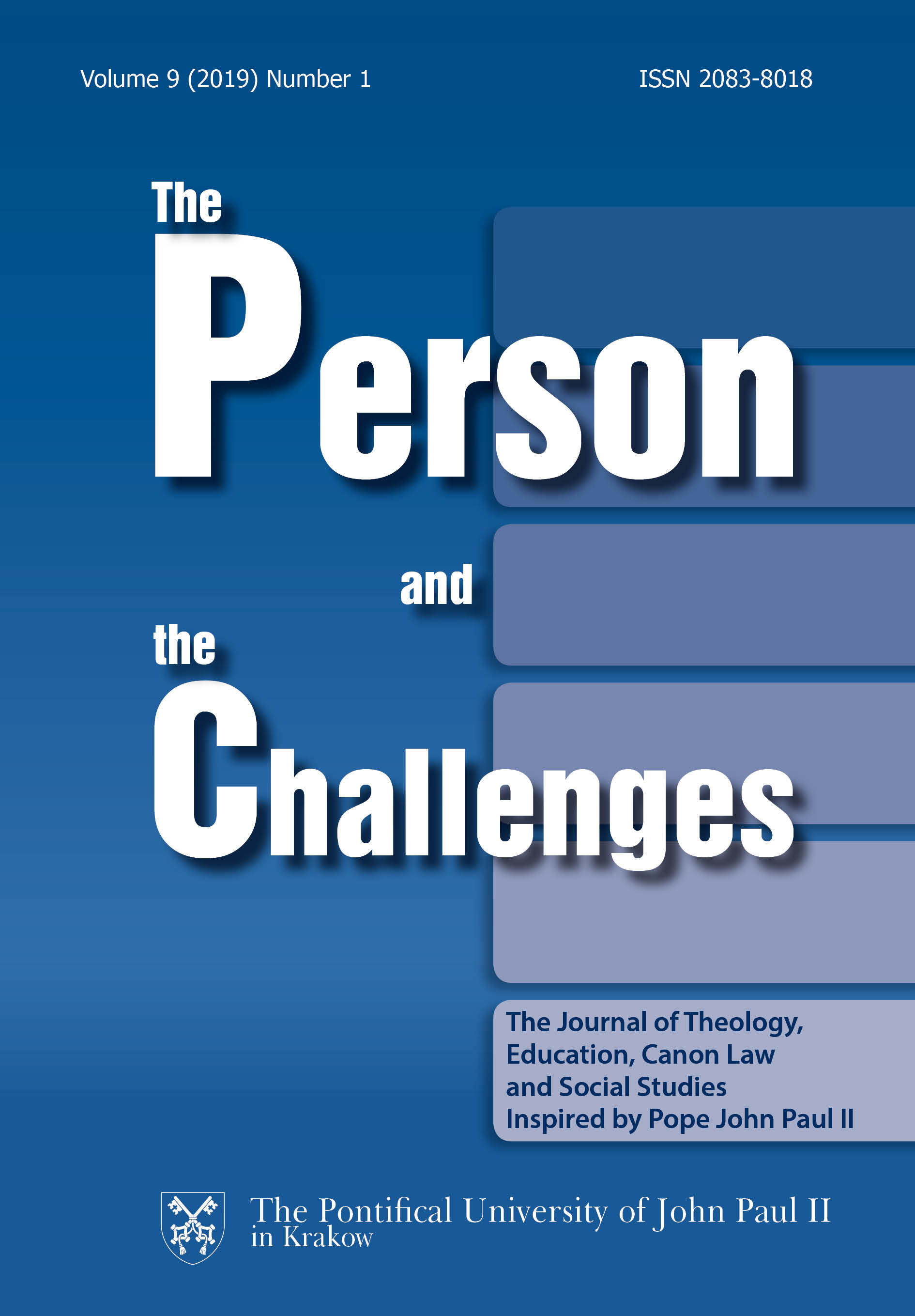New Man – New Creation in the Theology of Paul
DOI:
https://doi.org/10.15633/pch.3371Słowa kluczowe:
New creation, New Covenant, Redemption, Justification, Proto-pauline Letters, Deutero-pauline LettersAbstrakt
God had congratulated himself for creating the universe and humankind (Gen 1,31), a “very good” creation brought to nought by human sin. However, human nature still sighs and longs for the goodness and image of God within. God’s creation yearns to be created anew. Paul’s understanding of “new creation” and “new man” looks to the wise plan of God negated by sin. For Paul, the new era, in which the new creation reaches its aim in perfection, is the time of the parousia, the new and future coming of Jesus Christ. The Apostle of the Gentiles understood “kainē ktisis” in a soterio-cosmological sense, as the event consequent upon the redemption brought about by Christ Jesus that will be fulfilled in the parousia. New creation, new mankind in a new covenant takes place in communion with the death and resurrection of Christ Jesus in Baptism. The fundamental condition by which the revelation of the mystery of God takes place is the new covenant fulfilled in the blood of Christ and its effects: the outpouring of the Holy Spirit, upon those who believe, as even the prophets had foretold. One can observe the development of the Pauline thought in his Letters: from a theological perspective and its legitimacy in the Major Letters, to the practical consequences in the daily life of the Christian assemblies in the Deutero-Pauline Letters, that emerge from the application of these theological arguments.
Bibliografia
Aletti J.-N., Comment Dieu est-il juste. Clefs pour interpreter l’épître aux Romains, Paroles de Dieu, Paris, 1991, Editions du Seuil.
Aletti J.-N., Lettera ai Colossesi, Scritti delle origini cristiane 12, Bologna, 1994, EDB.
De Gennaro G., Salzer E. C., Letteratura mistica: San Paolo mistico, Vatican City, 1999, Libreria Editrice Vaticana.
Dunn J. D.G., The New Perspective on Paul. Collected Essays, Tübingen, 2005, Mohr Siebeck.
Fabris R., Per leggere Paolo, Roma, 1993, Borla.
Fitzmyer J. A., Pauline Theology; ABrief Sketch, Englewood Cliffs, New Jersey, 1967, Prentice Hall.
Fitzmyer J. A., Romans, The Anchor Bible 33, New York, 1993, Doubleday.
Giavini G., Verso San Paolo. Guida popolare al suo messaggio per allora e per oggi, Bibbia: Proposte e Metodi, Leumann, Torino, 2003, Elledici.
Giglioli A., L’uomo e il creato? Ktisis in S. Paolo, Collana Studi Biblici 21, Bologna, 1994, Edizioni Dehoniane.
Gloer W. H., An Exegetical and Theological Study of Paul’s Understanding of New Creation and Reconciliation in 2Cor. 5:14-21, Leviston, New York, 1996, Mellen Biblical Press.
Hooker M. D., Paul: AShort Introduction, Oxford, 2003, Oneworld Publications.
Hubbard M. V., New Creation in Paul’s Letters and Thought, Cambridge, 2002, Cambridge University Press.
Kilgallen J. J., First Corinthians. An Introduction and Study Guide, New York, Mahwah, 1987, Paulist Press.
Lubomirski M., Il ruolo dello Spirito Santo nel passaggio dell’uomo vecchio all’uomo nuovo secondo San Paolo, Roma, 1988, Pontifical Gregorian University.
Maritain J., Le pensée de Saint Paul, New York, 1941, Editions de la Maison Française; English edition: The Living Thoughts of Saint Paul (London: Cassell, 1945); Italian edition: Il pensiero di San Paolo, Roma, 21999, Borla.
Martyn J. L., Galatians, The Anchor Bible 33A, New York, 1998, Doubleday.
Penna R., L’apostolo Paolo. Studi di esegesi e teologia, Milano, 1991, Edizioni Paoline.
Romanello S., Lettera agli Efesini, I Libri Biblici: Nuovo Testamento 10, Milano, 2003, Edizioni Paoline.
Romanello S., Una legge buona ma impotente. Analisi retorico-letteraria di Rm 7,7-25 nel suo contesto, Supplementi alla Rivista Biblica 35, Bologna, 1999, EDB.
Schelkle K. H., Paolo. Vita, lettere, teologia, Biblioteca di Cultura Religiosa 56,Brescia, 1990, Paideia.
Ziesler J., Pauline Christianity, The Oxford Bible Series, Oxford, 21990, Oxford University Press.
Pobrania
Opublikowane
Numer
Dział
Licencja
Prawa autorskie (c) 2019 Paul Sciberras

Utwór dostępny jest na licencji Creative Commons Uznanie autorstwa 4.0 Międzynarodowe.
Autorzy publikujący w czasopiśmie udzielają jego wydawcy zgody o następującej treści:
- Autor zachowuje autorskie prawa majątkowe do utworu, a jednocześnie udziela wydawcy czasopisma zgody na jego pierwszą publikację w wersji drukowanej i wersji online na licencji Creative Commons Uznanie autorstwa 4.0 Międzynarodowe oraz zgody na wykonywanie opracowań, w tym przekładów.
- Autor ma możliwość udzielania zgody niewyłącznej na opublikowanie utworu w wersji, która ukazała się w czasopiśmie (np. zamieszczenia go w repozytorium instytucjonalnym lub opublikowania w książce), wraz z informacją o jego pierwszej publikacji w czasopiśmie.
- Autor może umieścić swój utwór online (np. w repozytorium instytucjonalnym lub na swojej stronie internetowej) jeszcze przed zgłoszeniem utworu do czasopisma.

